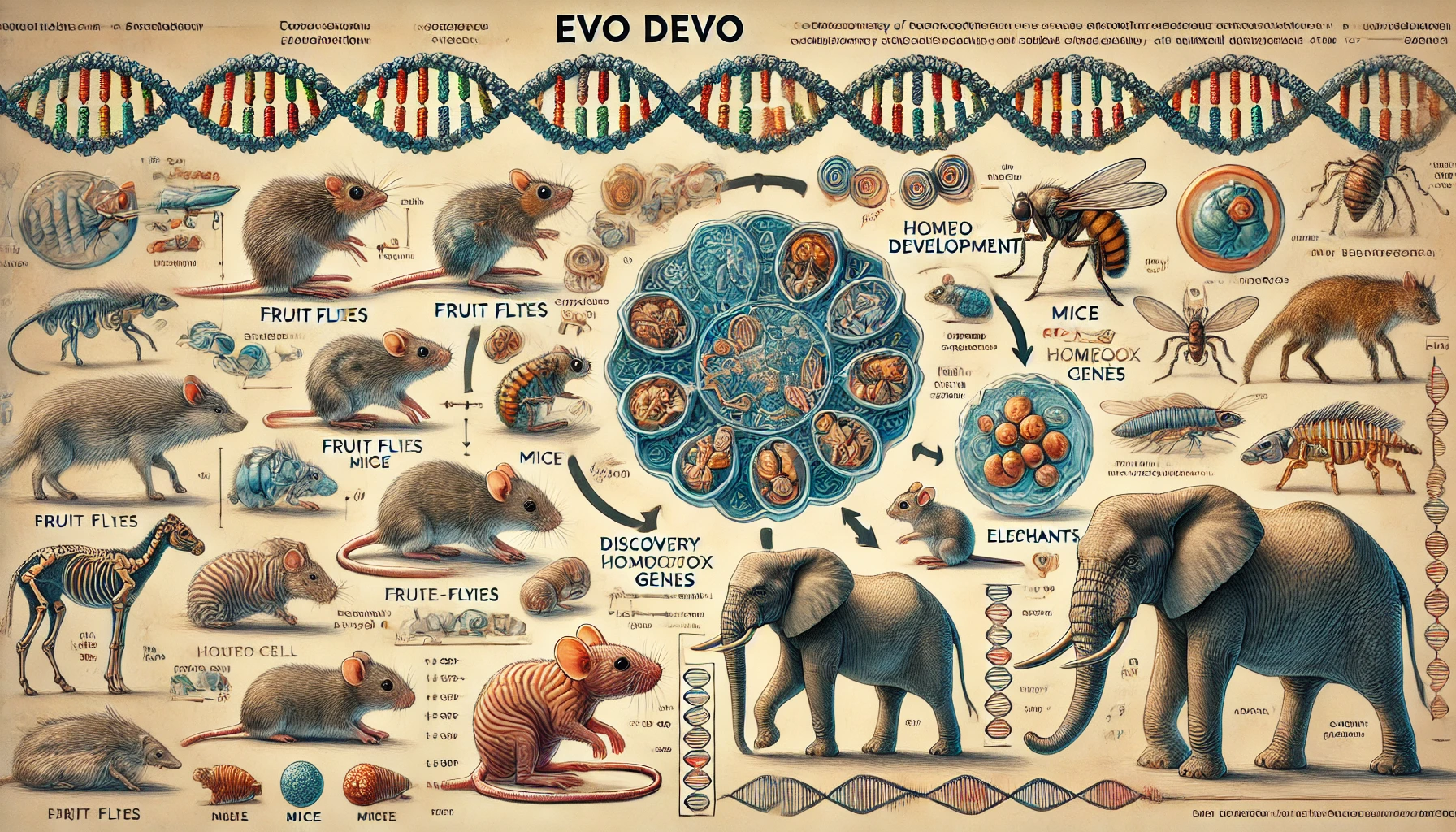Development is the process by which a single-celled fertilized egg develops into a complex organism, and evolutionary developmental biology (EDB) studies this process to reveal the relationship between evolution and development. Beginning with the discovery of the homeobox gene, ibodibo explains the mechanisms of evolution by identifying similar gene functions in different species and explores evolutionary change by studying the interaction between environmental changes and gene expression.
Development is the process by which a single-celled fertilized egg undergoes cell proliferation, differentiation, and morphogenesis to become a complex organism composed of billions of cells. It’s a marvelous process that involves the development of life from simple forms into complex, functional structures. Since Darwin’s time, biologists have recognized that evolution and development are closely related, meaning that the evolution of simple organisms into more complex ones over generations is analogous to development. EVO DEVO, or evolutionary developmental biology, is the study of developmental evolution by comparing the developmental processes of organisms to reveal common ancestral relationships.
It gained academic status through the discovery of the ‘homeobox gene’, which regulates the formation of parts of organisms during development. The American biologist and his colleagues studied the homeobox genes in fruit flies and realized that they act as a command center for the sophisticated operation of gene replication in cells. This suggests that the development of life is not just random cell division, but a precisely regulated process.

Since the discovery of the homeobox gene in fruit flies, the existence of homeobox genes has been confirmed in animals ranging from nematodes to elephants. For example, homeobox genes have been found in mice, and as in the case of fruit flies, the sequence of the genes matches the sequence of the body parts they affect. This suggests that the similarity of homeobox genes equally affects the order in which they arise and how they are organized into complexes, meaning that homeobox genes are conserved to perform very similar functions in seemingly phylogenetically disparate species.
For example, the genes involved in eye development are the iris genes in fruit flies and the small eye genes in mice. The gene that forms the eyes of these animals is called the Pax-6 gene. The eyes of insects like fruit flies are double-eyed, which means they are very different in structure, material, and behavior from the eyes of vertebrates like mice. However, when the fruit fly’s iris gene was transplanted into mice and the mouse’s small eye gene was transplanted into fruit flies, both resulted in normal eyes that were specific to the species being tested, not to the gene donor. Furthermore, when the mouse’s small eye gene was transplanted into the fruit fly’s leg development gene, the fruit fly’s legs developed fruit fly eye tissue. This suggests that the common ancestor of fruit flies and mice used homeotic genes, such as Pax-6, and that these genes have been reused and conserved over the course of evolution.
Thus, Ibodibo’s discovery of the fruit fly homeodomain challenged the orthodox logic of evolutionary biology, showing that genes conduct the orchestra of evolution and development: that there are genes that regulate important developmental processes in living things, and that evolution is the process by which this system of genes changes. This discovery reverberated across many fields of biology and led to a rethinking of the relationship between evolution and development.
Recent studies have extended the concept of Ivo Dibo to explore the effects of environmental changes on gene expression. This suggests that certain environmental conditions may alter gene expression patterns during development, thereby facilitating evolutionary change. For example, certain environmental stresses may increase or decrease the expression of certain homeotic genes, leading to morphological changes in organisms. This perspective shows that evolution and development are not just about changes within genes, but can also be strongly influenced by interactions with the environment.
Thus, ibodibo goes beyond the study of genes and provides important clues to understanding how organisms have evolved by interacting with their environment. This marks a major milestone in the advancement of life sciences and points the way for future research. Research like this will contribute to a deeper understanding of the origin and evolution of life.
